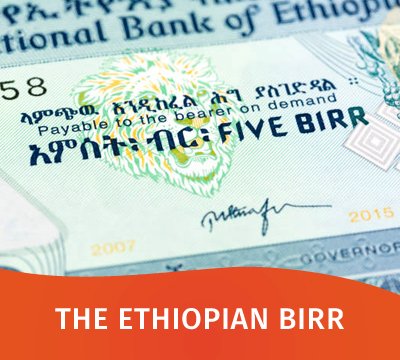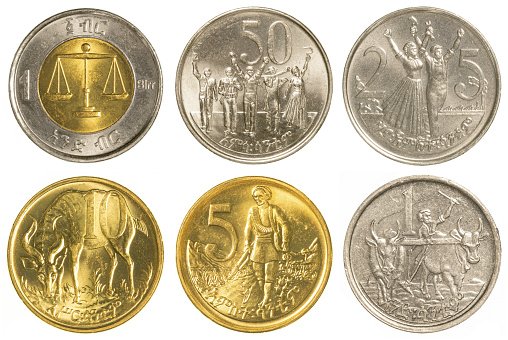The Ethiopian Birr

Birr is the official unit of currency of Ethiopia and has been in service in since the Nineteen-Thirties. One Birr can be broken down into 100 cents. Ethiopian Birr notes comes in 200, 100, 50, 10, 5 and 1 denomination.
The Ethiopian Birr is very established currency with tight controls. The Ethiopian currency has a slight difference in value between the black market and the official rate of the currency.
Here are some more useful facts about the Ethiopian Birr.
Ethiopian Birr Notes

The Bank of Ethiopia introduced Birr notes in 1932 as the need increased due to the country’s rising GDP and the major exports that Ethiopia had at the time.
Coffee, seeds, oil pulses, livestock and textiles export numbers encouraged the use of bank bills. From just coffee exports, more than 16 million people needed a better way of getting paid.
The National Bank of Ethiopia opted to do this with the bank bill, as it was the easiest option.
Coin Denomination

In 1855, Ethiopia adopted the Maria Theresa Thaler as a standard coin. In 1908, a new coin was introduced to the public.
A silver Birr still has the fineness and the same weight as the old coins. Copper coins were introduced between 1894 and 1897. These coins added the denominations of 1/32 and 1/100 of an Ethiopian birr.
More coins were added in 1944 and were made from copper and silver. The 1, 5, 10, and 25 santim are copper, and the 50 santim is silver. In 1977, there was a second series of coins that changed some of the coins to brass and aluminum.
Currently there are five coin denominations, 5, 10, 25, 50 and 100 santim (1 Birr metallic coin), which was introduced in 2011.
Exchange Rate
Ethiopia has no restriction of the amount of foreign currency, which is imported into the country. Nevertheless, all the currency is checked and recorded by a currency declaration form. This means that foreign currencies have to be converted at authorized banks and hotels.
This monitors the exchange rate very closely. This is important to know if you are planning to trip to Ethiopia. Customs will need the declaration form for the currency at the time of departure.
The only place that visitors are allowed to exchange their extra Birr is at the airport. However, a visitor will have to produce all their receipts, along with the currency declaration form.
This can seem like a pain to some travelers; however, it makes the Birr a stable currency overall. The values still change by supply and demand. The exchange rate commercial bank of Ethiopia sets is currently the official rate of the Ethiopian Birr.
New Birr Notes
On September 14, 2020, new 10, 50 and 100 Ethiopian birr notes were introduced in an effort to tackle corruption and illicit trade. The banknotes come with high tech security features and subtle design change. A brand new 200 birr note was also introduced.
Birr Profile
- Name: Ethiopian Birr
- Symbol: Br
- Coins: 1, 5, 10, 25, 50 Santim, 1 Birr
- Banknotes: 1, 5, 10, 50, 100, 200 Birr
- Minor Unit: 1/100 = Santim
- Bank: National Bank of Ethiopia
